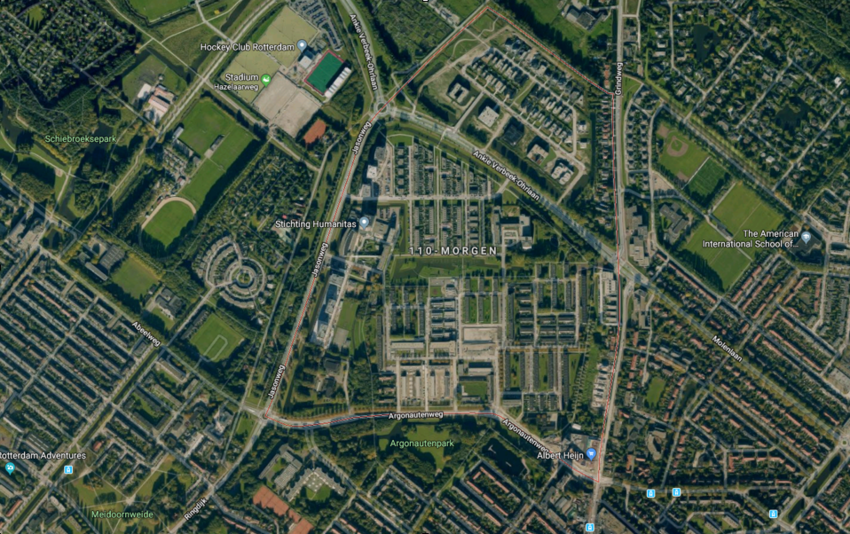Shimon attie workshop: temenos
The temenos (Gr. τέμενος) was in ancient times a piece of land marked as separate from the rest and therefore not to be sold, leased or to be used for common activities. This type of areas especially included ritual spaces consecrated to the gods. Even outside a strictly religious context today the ritual function and idea of sacredness of the land, of its untouchability, has not completely disappeared; rather it has been gradually absorbed into ordinary customs and by the subdued rules and rituals of the everyday.
The area known as 110-Morgen in Hillegersberg-Noord, which belongs to a portion of land which was reclaimed from a body of water in the XVIII century, provided contextual background for the work. In the 1950s 110-Morgen was developed as a residential working class area that over the years was altered and redesigned. Living in Oude Hillegersberg, the historical neighborhood just outside the boundaries of 110-Morgen, I was from the very beginning both mystified and enthralled by the structure of the newer neighborhood, which is a highly conceptualized urban space in which streets and buildings bear reference to deities and heroes from the Olympian pantheon and in which the abundant green areas, mostly empty and not lived in at all, carry an enigmatic distorted sacral aura.
Temenos is a meditation in short video form on uses and perception of public land and its connection with the notion of sacred ground. It collides artificially constructed space, intervention on the public soil and its photographic evidence both to reflect and to dismantle. Structurally, the video is made of three still images with different lighting, which interweave and blend into one another. Everything in the stills is a computer generated construction apart from the central piece, the monolith-icon object, which is made of a photograph of a clump of soil dug in 110-Morgen. The minimalism of the work, besides illustrating the concept behind it, was dictated by tight time limits—less than two days—in which the same was supposed to be developed.
Temenos was partly inspired by the stage designs of Edward Gordon Craig, the concrete buildings of Tadao Ando, the Rothko Chapel in Houston, and the refined artistry of orthodox icons.



